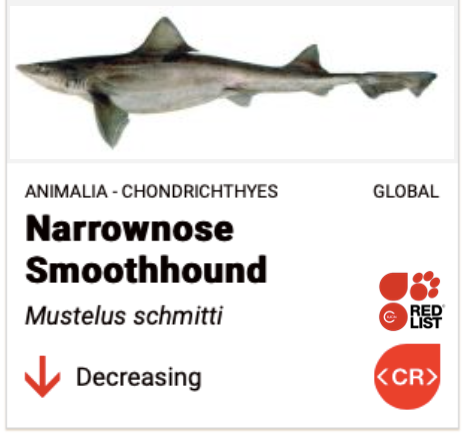What's My Age Again?
- Sophie SharkSpeak Maycock

- Jul 7, 2020
- 3 min read
Updated: Aug 5, 2024
We rarely witness their births... We have yet to track an individual throughout its life... Most of their existence remains a mystery to us... So there are still so many questions about sharjs that remain unanswered. But as our scientific techniques continue to improve we are starting to shed some light. For example, knowing how old a shark is. So how on Earth do scientists do this? And why does it matter?

Growing Old Gracefully
Generally speaking, a larger shark is an older shark. Sharks are born as almost-perfect miniatures of their adult form and grow continuously throughout their lives. In order to grow, a shark deposits another layer of cartilage around their skeleton, allowing them to become larger. Many shark species deposit a new ring every year (annually), whereas other species deposit a new ring every two years (biannually) (Wells et al, 2017).
When we look at a shark's skeleton, if we can find the ring at the centre which was already formed when a shark was born (the "birth band", age=0), we can can count layers to estimate a shark's age... much like counting the rings on a tree. Each new band of growth has a dark layer and a translucent layer (known as "band pairs"), so the bands can sometimes be very difficult to see, especially in relatively small sharks. Therefore, the bones are often stained and inspected under a microscope to ensure counts are accurate (Wells et al, 2017).
For example, vertebral band analysis has shown us that blue sharks (Prionace glauca) grow very rapidly; depositing a new band of cartilage onto their vertebra annually. This means that they are able to become sexually mature when they reach a size of 2.0 m total length, at just 5-6 years of age, and they may live for 26 years (Wells et al, 2017).
Feeling Blue
But why does this matter? Why would we care how old an individual shark is? In fact, it is critically important to understand how old a shark is at a particular size because their maturity is related to their body size; they must reach a critical size in order to become sexually mature (able to reproduce). Understanding their growth rate and longevity, can tell us how likely a species will be to bounce back after serious declines. This is vital for the conservation of endangered shark species.
If we compare the growth rate of the blue shark, many other species are more slow-growing and their size at maturity is relatively older. For instance, vertebral band analysis has shown that the narrownose smooth-hound (Mustelus schmitti) reach their mature size by 6 - 7 and their longevity is less than 21 years. Therefore, compared to the blue sharks, the narrownose smooth-hound grows more slowly, reaches maturity later in life and dies younger. This means that their "fecundity" (the ability to produce abundant offspring) is lower (Molina et al, 2017).
The narrownose smooth-hound is the most exploited shark species within its range throughout the waters of Argentina, Brazil and Uruguay. They are now listed as Endangered by the International Union for the Conservation of Nature Red List of Threatened Species (IUCN, 2020).
In order for shark conservation plans to be successful, we cannot assume every species can survive the same levels of pressure from fisheries. Therefore, we must design management plans individually for each species. Vertebral band analysis is an excellent tool and in conjunction with other methods, is an important piece of the puzzle allowing us to better understand the lives of sharks.

References
Hamady LL, Natanson LJ, Skomal GB & Thorrold SR (2014). Vertebral bomb radiocarbon suggests extreme longevity in white sharks. PloS one, 9:1, e84006. Access online.
IUCN (2020). International Union for the conservation of Nature Red List of Threatened Species. Access online.
Molina JM, Blasina GE & Lopez Cazorla AC (2017). Age and growth of the highly exploited narrownose smooth-hound (Mustelus schmitti) (Pisces: Elasmobranchii). Fisheries Bulletin, 115, 365–379. Access online.
Wells RJD, Spear N & Kohin S (2017). Age validation of the blue shark (Prionace glauca) in the eastern Pacific Ocean. Marine and Freshwater Research, 68, 1130–1136. Access online.
By Sophie A. Maycock for SharkSpeak.












INTERESTING ARTICLE